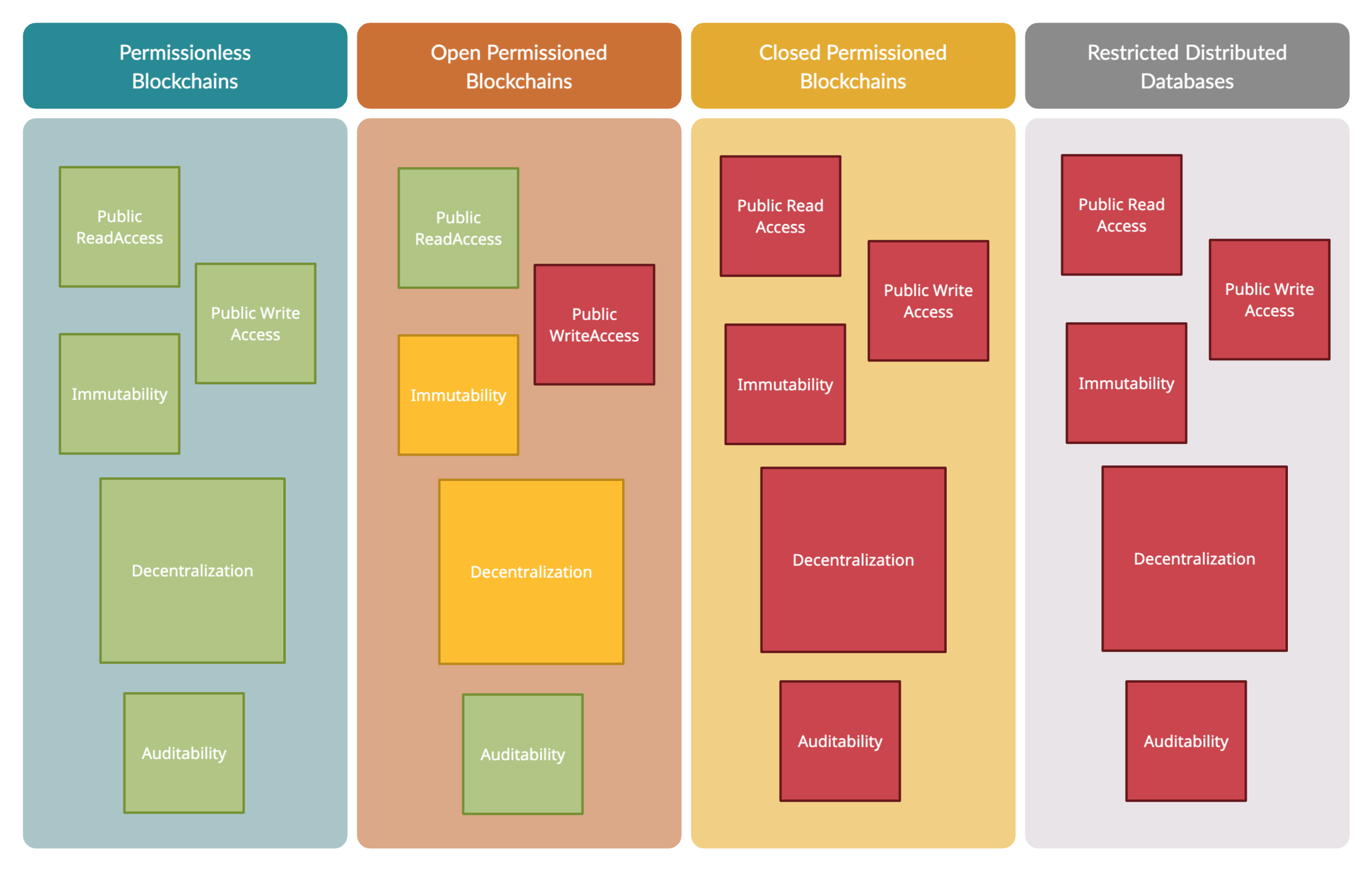Private Blockchains vs Real Blockchains
Blockchains can be categorized as permissionless (Public) blockchains and permissioned (Open and Closed) blockchains. But not all of them are real blockchains.
Permissionless blockchains do not enforce any restrictions on its nodes; anyone can openly read data, inspect data, and participate in validation and writing of the data in accordance with the consensus protocol of the particular blockchain. They are also referred as public blockchains. Bitcoin, Ethereum and many other cryptocurrencies run on permissionless blockchains. These blockchains are considered fully decentralized and secured using advanced cryptography, whereas economic incentives are provided for users who work to keep the integrity of the network. The transactions are completely irreversible on a permissionless blockchain by its design, meaning once confirmed by its nodes the blockchain transactions cannot be reversed. Due to the security considerations and strict restrictions, transaction throughput of a permissionless blockchain is comparatively lesser than one of a permissioned blockchain. Permissionless blockchains are fully decentralized and transparent.
Permissioned blockchains restrict the writing access for a limited set of participants, and a consensus mechanism is used to validate the writing of data among its privileged participants. They are also referred as private blockchains. Read access could either be open to anyone or closed to the public based on the requirement of the permissioned blockchain. This type of blockchains has evolved as an alternative to initial permissionless blockchains, to address the requirement for running blockchain technology among a set of known and identifiable participants that have to be explicitly responsible to the blockchain network, while participants need not be fully trusting each other. The permissioned blockchains are mainly useful for business and social applications, which requires blockchain distributed ledger technology without the need of a incentifying cryptocurrency. Based on the read access mentioned, permissioned blockchains are further divided as open and closed—open permissioned blockchains are partially decentralized, anyone can read its data, whereas closed permissioned blockchains are fully centralized, data is visible only to the participants.

We thoroughly believe blockchain technology is rather necessary only for permissionless blockchains, and open permissioned blockchains. Closed permissioned blockchains can be argued as restricted distributed databases which are facelifted with the blockchain term. These are actually fully private blockchains with a distributed databases which might have took the blockchain term to get a hype from the technological perspective. The initial idea of introducing blockchain concept was to remove centralization and add transparency to everyone to read and update its data. Open permissioned blockchains mostly adhere to this principle of transparency even though somewhat centralized in writing its data and could be useful for applications such as identity systems, academic certification systems, where anyone can read its data but only a certain set of participants are privileged to write the data into blockchain. Closed permissioned blockchains are fully centralized and also not transparent to anyone, dismantling the core concept of a blockchain. Therefore, these blockchains can be replaced with distributed database systems with restrictions implemented on top of it. For example, a supply chain management system for a private organization can be implemented without the concepts of blockchain. In order to support our argument on closed permissioned blockchains, we have presented a characteristic comparison of different blockchain types compared with restricted distributed database systems in following Table. The comparison shows that all of the characteristics in closed permissioned blockchains are comparatively similar to that of restricted database systems. In addition to this categorization, there is also another blockchain categorization called public, consortium, and private blockchains. In simple terms, public blockchains are permissionless blockchains, whereas consortium and private blockchains fall into permissioned blockchains.
| Permissionless blockchain | Open permissioned blockchain | Closed permissioned blockchain | Restricted distributed database | |
|---|---|---|---|---|
| Public read access | Available | Available | Not available | Not available |
| Public write access | Available | Not available | Not available | Not available |
| Immutability | High | Medium | Low | Low |
| Throughput | Low | Medium | High | High |
| Scalability | Low | Medium | High | High |
| Decentralization | High | Medium | Low | Low |
| Distribution | High | Medium | Low | Low |
| Auditability | High | High | Low | Low |
Initially, we have explianed types of blockchains and why we belive private blockchains should never be considered actual blockchains in detail with the in following research paper last year:
Survey on Blockchain Technology Concepts, Applications, and Issues